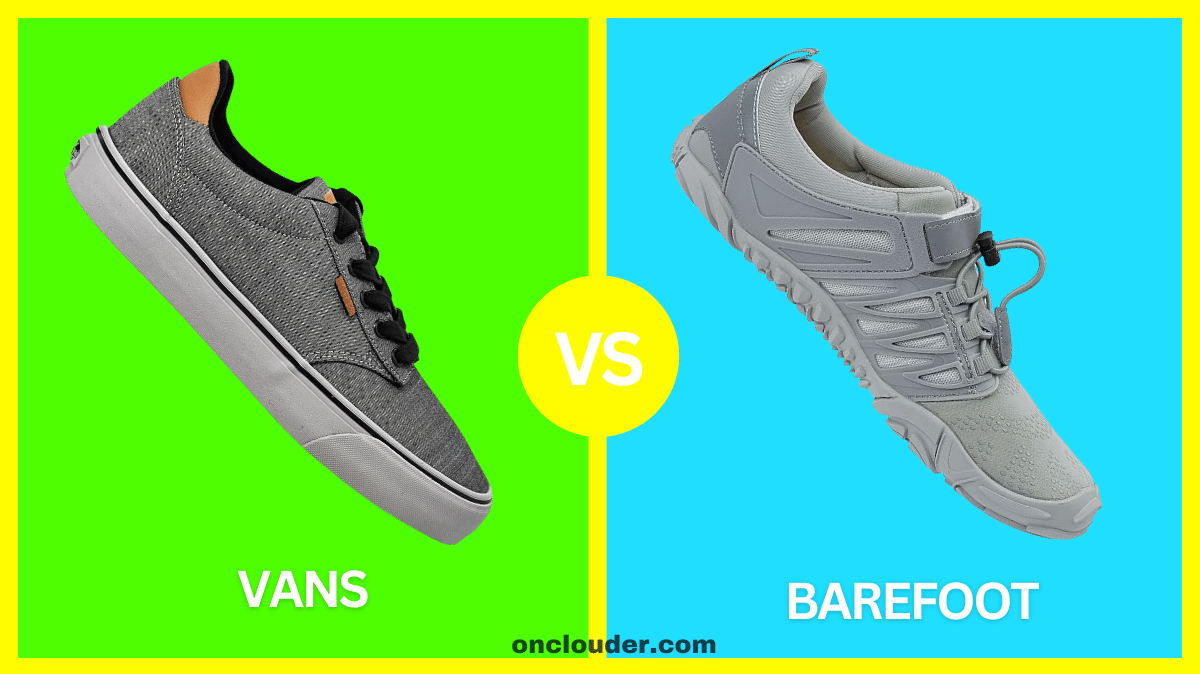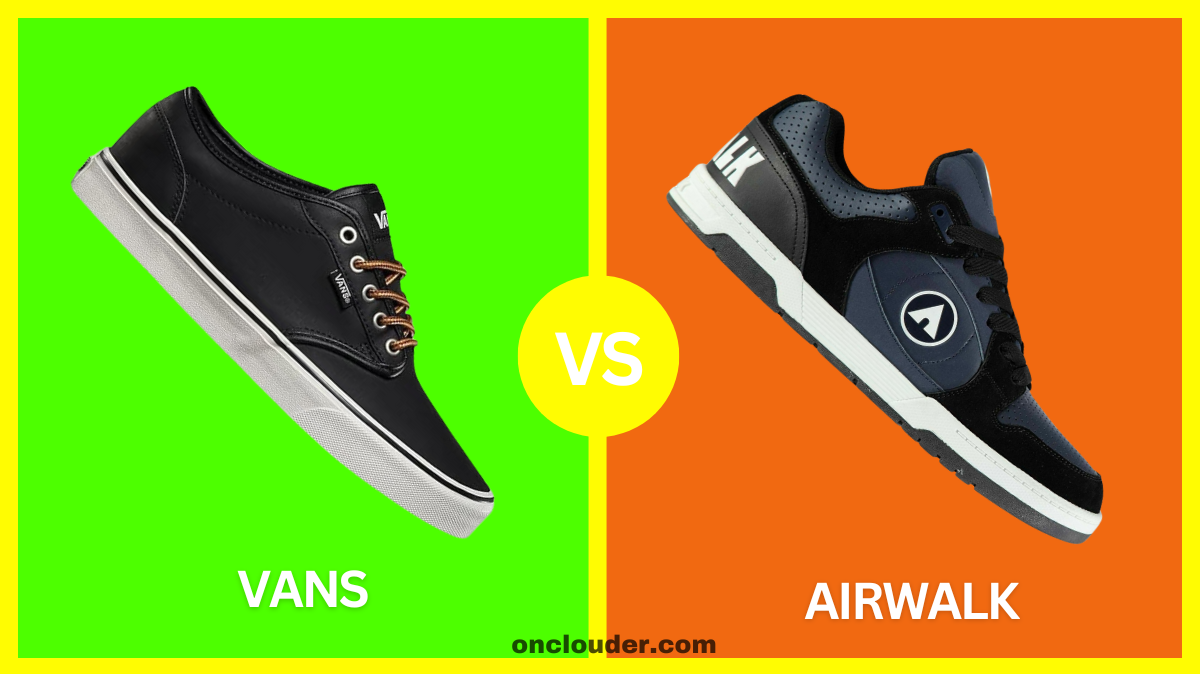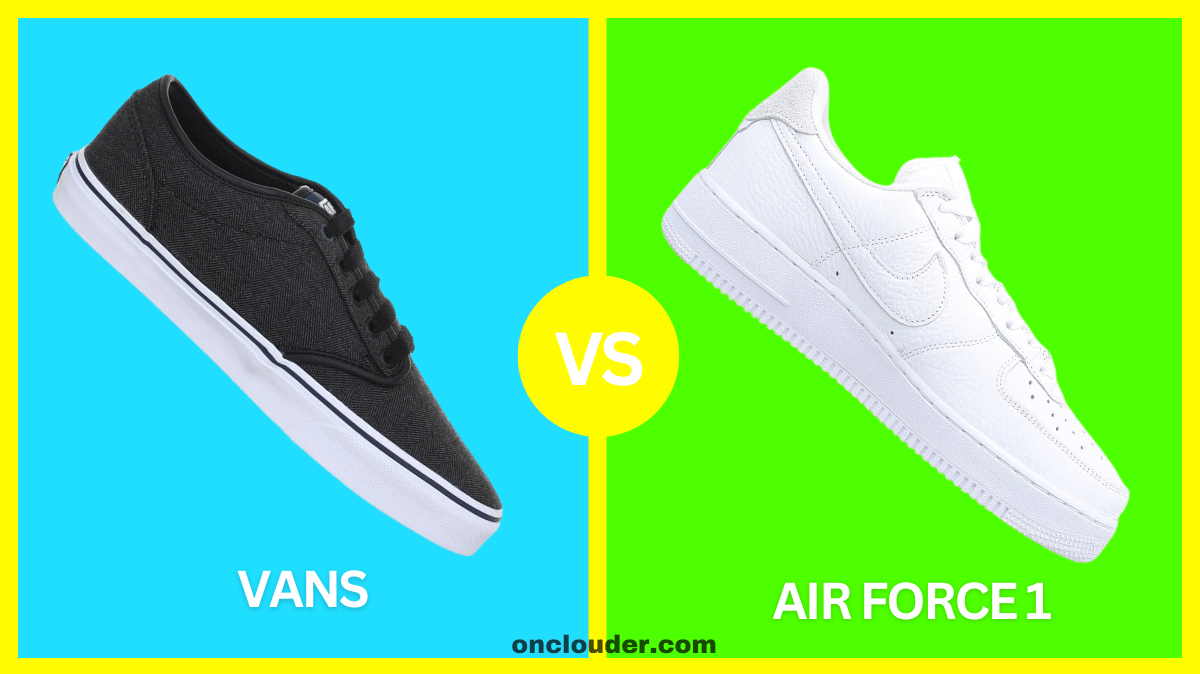Today, we’re going to talk about two totally different types of shoes: Vans and barefoot shoes. You might be wondering which one is better for you.
Well, don’t worry! We’re going to break it all down so you can make the best choice for your feet.
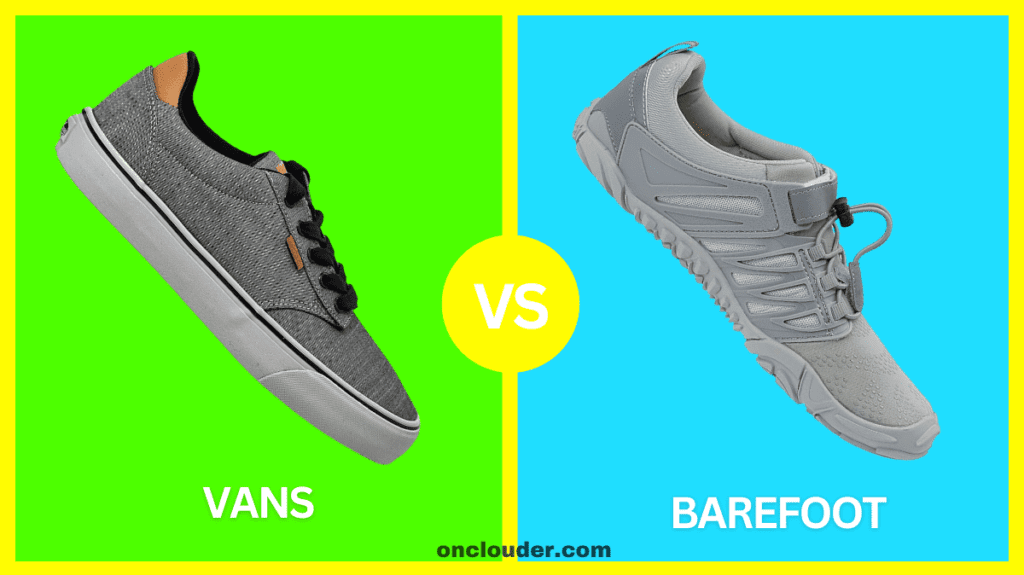
Contents
- 1 Vans vs Barefoot Shoes
- 2 What’s the Big Deal?
- 3 Durability: Built to Last?
- 4 Breathing: Let Your Feet Breathe!
- 5 Cushioning: Soft or Firm?
- 6 Shoe Fit: Snug as a Bug
- 7 Stability: Steady as She Goes
- 8 Comfort: Happy Feet
- 9 Quality: Built to Last
- 10 Style: Looking Good
- 11 Size: Finding the Right Fit
- 12 Material: What’s It Made Of?
- 13 Weight: Light as a Feather?
- 14 Flexibility: Bend and Flex
- 15 Water Resistance: Splash Proof?
- 16 Sole: The Bottom Line
- 17 User Reviews and Ratings
- 18 Price Comparison
- 19 Pros and Cons
- 20 Conclusion
- 21 Frequently Asked Questions
Vans vs Barefoot Shoes
The main difference between Vans and barefoot shoes is how they let your feet move. Vans have thick soles that protect your feet but don’t let you feel the ground much.
Barefoot shoes have very thin soles that let your feet move naturally and feel the ground. They’re like being barefoot, but with some protection.
Now, let’s create a detailed comparison table for Vans vs Barefoot Shoes:
| Feature | Vans | Barefoot Shoes |
| Sole | Thick, rubber | Very thin, flexible |
| Feel | Cushioned, less ground feel | More ground feel |
| Weight | Heavier | Lighter |
| Toe space | Less room for toes to spread | More room for toes to spread |
| Style | Classic, skateboard look | Minimal, modern look |
| Best for | Skateboarding, casual wear | Natural movement, strengthening feet |
| Durability | Very durable | Can be less durable |
| Price range | $50 – $100 | $40 – $150 |
| Break-in time | Short | Longer (for your feet to adjust) |
| Sizes | Usually true to size | Might need careful sizing |
In summary: Vans and barefoot shoes are very different types of shoes. Vans are great for skateboarding and looking cool. They protect your feet well but don’t let you feel the ground much.
Barefoot shoes are super light and let your feet move naturally. They help make your feet stronger but take some time to get used to.
Also Read: Vans vs Adidas
What’s the Big Deal?
Before we dive in, let’s talk about why this matters. The shoes you wear can affect how you walk, run, and even how your feet grow. That’s pretty important stuff, right? So, let’s get to know these two shoe types better.
Vans: The Classic Cool
Vans are those awesome skater shoes you’ve probably seen everywhere. They’re known for their cool look and comfy feel. People love them for hanging out, skating, and just looking stylish.
Barefoot Shoes: The New Kid on the Block
Barefoot shoes might sound weird, but they’re actually pretty cool. They’re designed to make you feel like you’re not wearing shoes at all. The idea is to let your feet move naturally, just like if you were walking barefoot.
Now, let’s compare these two shoe types in different areas to see how they stack up!
Durability: Built to Last?
Vans: Tough Cookies
Vans are pretty tough. They’re made to handle the wear and tear of skateboarding, so they can take a beating. The canvas and suede materials they use are strong, and the soles are thick and sturdy.
Barefoot Shoes: Surprisingly Strong
You might think barefoot shoes would wear out quickly, but many are actually quite durable. They’re often made with tough materials like leather or special fabrics that can handle a lot of use.
Which wins? Vans have the edge here. They’re built for rough use and tend to last longer.
Breathing: Let Your Feet Breathe!
Vans: Not Bad, But Not Great
Vans shoes are okay when it comes to breathing. The canvas material lets some air in, but they can get a bit sweaty on hot days.
Barefoot Shoes: Fresh Air for Your Feet
Barefoot shoes are usually super breathable. Many have special materials or designs that let air flow freely, keeping your feet cool and dry.
Which wins? Barefoot shoes take this one. They’re designed to let your feet breathe easier.
Also Read: Vans vs Air Force 1
Cushioning: Soft or Firm?
Vans: Comfy Cushion
Vans have a nice, cushy sole that absorbs shock when you walk or skate. It feels soft and comfortable, especially if you’re on your feet all day.
Barefoot Shoes: Feeling the Ground
Barefoot shoes have very little cushioning. That’s on purpose! They want you to feel the ground beneath your feet. It might feel weird at first, but some people love it.
Which wins? It depends on what you like. If you want soft comfort, go for Vans. If you want to feel the ground, barefoot shoes are your pick.
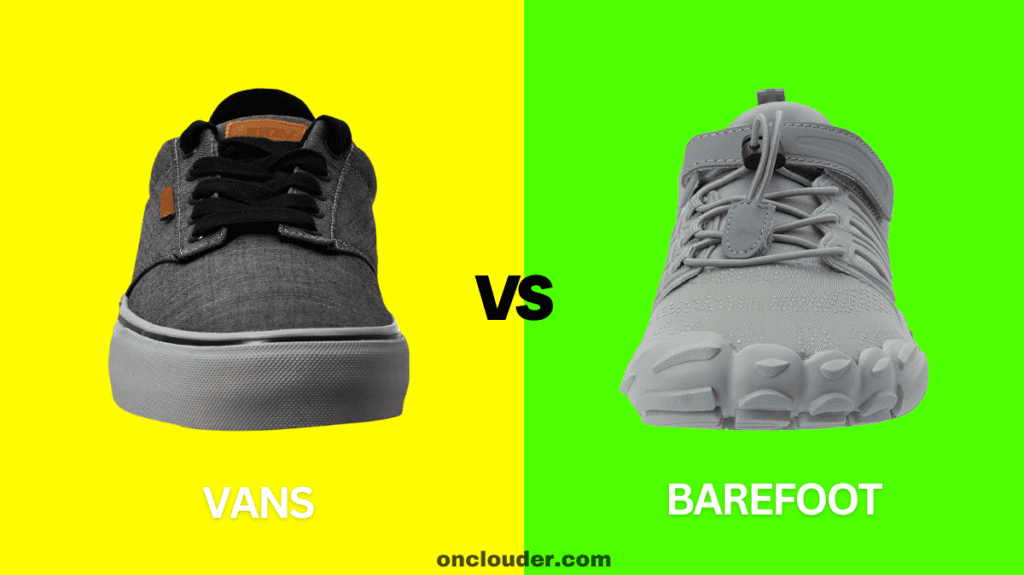
Shoe Fit: Snug as a Bug
Vans: Roomy and Relaxed
Vans usually have a roomier fit. They’re not too tight, which is great if you like some space for your toes. Some people find them a bit wide, though.
Barefoot Shoes: Like a Second Skin
Barefoot shoes are meant to fit very closely, like a glove for your foot. They should feel snug but not tight, with plenty of room for your toes to spread out.
Which wins? It’s a tie! Both can fit well, but in different ways. Try them on to see what feels best for you.
Stability: Steady as She Goes
Vans: Solid and Supportive
Vans have a flat, wide sole that gives you good stability. They’re great for standing around or cruising on a skateboard.
Barefoot Shoes: Natural Balance
Barefoot shoes might seem less stable at first, but they’re designed to help you use your natural balance. Over time, many people find they feel more stable in these shoes.
Which wins? For immediate stability, Vans win. But barefoot shoes can improve your natural stability over time.
Also Read: Vans vs Airwalk
Comfort: Happy Feet
Vans: Cushy Comfort
Vans are known for being comfy right out of the box. The padding and soft materials make them feel good from day one.
Barefoot Shoes: Different Kind of Comfort
Barefoot shoes might feel strange at first, but many people find them super comfortable once they get used to them. They let your feet move naturally, which can feel great.
Which wins? It’s another tie! Vans are comfy in a traditional way, while barefoot shoes offer a different kind of comfort.
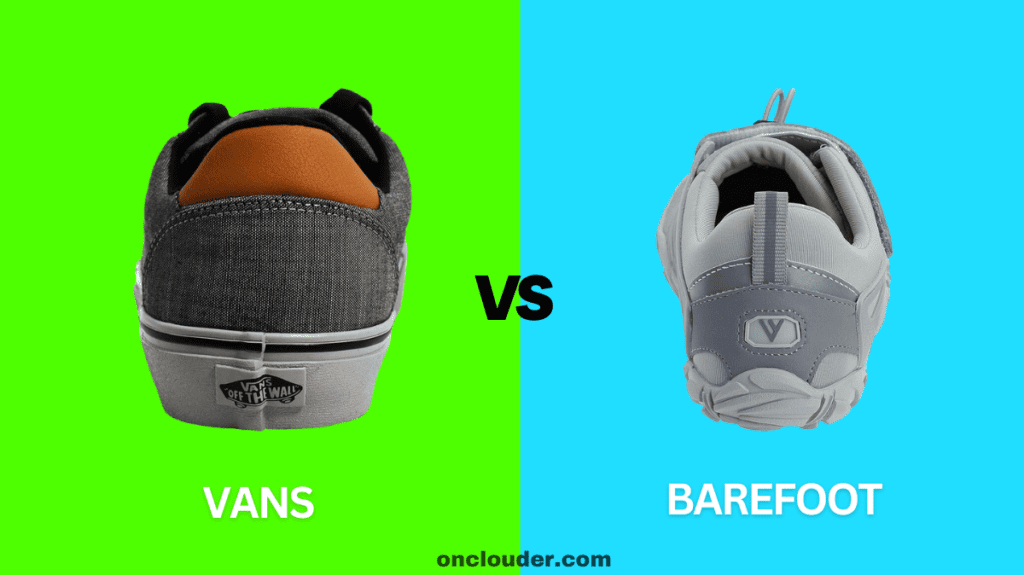
Quality: Built to Last
Vans: Tried and True
Vans have been around for a long time, and they’re known for making good quality shoes. They use solid materials and construction techniques.
Barefoot Shoes: New but Nice
Many barefoot shoe brands focus on high-quality materials and construction. They’re often made with careful attention to detail.
Which wins? It’s close, but Vans edge out due to their long history of consistent quality.
Also Read: Vans vs Nike
Style: Looking Good
Vans: Cool and Classic
Vans have a classic, cool look that never seems to go out of style. They come in tons of colors and patterns, so you can express yourself.
Barefoot Shoes: Unique and Minimalist
Barefoot shoes have a unique, minimalist look. Some people love it, while others might find it a bit strange at first.
Which wins? If you’re into classic cool, Vans win. If you like standing out, barefoot shoes might be your style.
Size: Finding the Right Fit
Vans: True to Size
Vans usually fit true to size, meaning you can usually order your normal shoe size and they’ll fit well.
Barefoot Shoes: Measure Carefully
Barefoot shoes often require more careful sizing. You might need to measure your feet and check the brand’s size guide to get the right fit.
Which wins? Vans are easier to size, so they win this round.
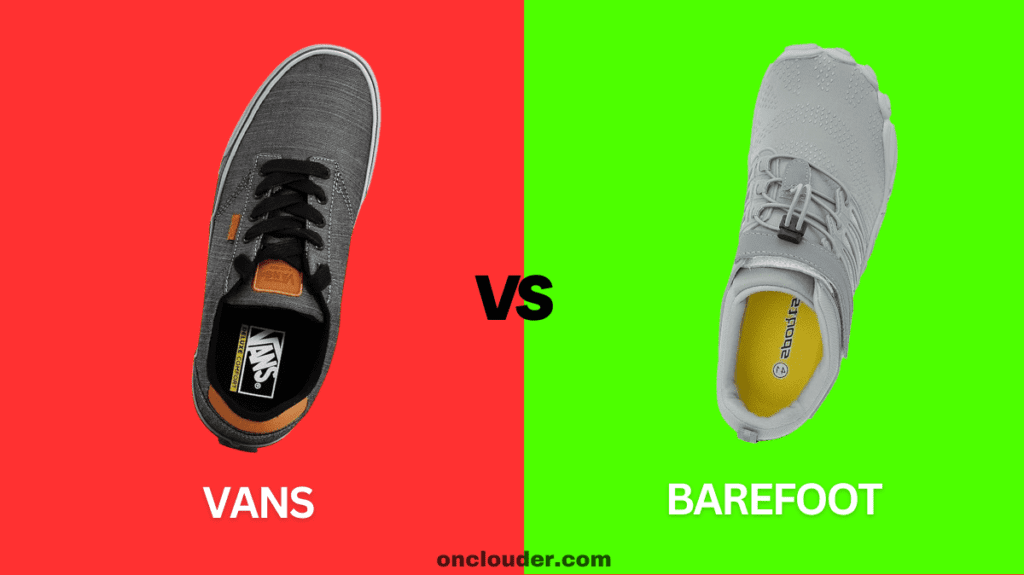
Material: What’s It Made Of?
Vans: Canvas and Suede
Vans are typically made of canvas or suede, with rubber soles. These materials are durable and look great.
Barefoot Shoes: Variety of Materials
Barefoot shoes can be made from all sorts of materials, including leather, synthetic fabrics, and even natural materials like hemp.
Which wins? It’s a tie. Both use good materials, just different kinds for different purposes.
Weight: Light as a Feather?
Vans: Middle of the Road
Vans aren’t super heavy, but they’re not the lightest shoes either. They’re about average weight for a sneaker.
Barefoot Shoes: Featherlight
Barefoot shoes are usually very light. You might even forget you’re wearing them!
Which wins? Barefoot shoes win this one. They’re usually much lighter than Vans.
Flexibility: Bend and Flex
Vans: Some Flex
Vans have some flexibility, especially after you break them in. But they’re not the most flexible shoes out there.
Barefoot Shoes: Super Flexy
Barefoot shoes are designed to be super flexible. They let your foot bend and move naturally.
Which wins? Barefoot shoes are the clear winner in flexibility.
Water Resistance: Splash Proof?
Vans: Not Great in Water
Vans aren’t really made for water. The canvas can get soaked pretty easily.
Barefoot Shoes: It Depends
Some barefoot shoes are designed to be water-resistant, while others aren’t. You’d need to check the specific shoe.
Which wins? It’s a tie. Neither is naturally great with water, but you can find water-resistant options in both.
Sole: The Bottom Line
Vans: Thick and Grippy
Vans have thick, rubber soles with a distinctive waffle pattern. They provide good grip, especially for skateboarding.
Barefoot Shoes: Thin and Flexible
Barefoot shoe soles are very thin and flexible. They’re designed to protect your feet while still letting you feel the ground.
Which wins? It depends on what you want. Vans win for protection and grip, barefoot shoes win for ground feel.

User Reviews and Ratings
Let’s see what other kids like you think about these shoes!
| Shoe Type | Average Rating | Number of Reviews |
| Vans | ⭐⭐⭐⭐ (4.2/5) | 1000+ |
| Barefoot | ⭐⭐⭐⭐ (4.0/5) | 500+ |
Price Comparison
Here’s a quick look at how much these shoes typically cost:
| Shoe Type | Low End | High End |
| Vans | $50 | $100 |
| Barefoot | $40 | $150 |
Remember, prices can vary depending on the specific style and where you buy them!
Pros and Cons
| Shoe Type | Pros | Cons |
| Vans | Look cool and stylish | Can get hot in warm weather |
| Good for skateboarding | Not great for running | |
| Comfortable right away | Less flexible than barefoot shoes | |
| Easy to find in stores | Might be too wide for some feet | |
| Lots of colors and patterns | Can be a bit heavy | |
| Barefoot Shoes | Very light on your feet | Look different from normal shoes |
| Help strengthen your feet | Take time to get used to | |
| Let your toes spread out | Can be expensive | |
| Good for feeling the ground | Harder to find in stores | |
| Can improve your balance | Less protection for your feet |
Conclusion
After looking at all these factors, it’s clear that both Vans and barefoot shoes have their strengths. Vans are great if you want a classic, comfortable shoe that’s good for everyday wear and activities like skateboarding. They’re durable, look cool, and are easy to find.
Barefoot shoes, on the other hand, are perfect if you want to try something different. They’re super light, flexible, and can help strengthen your feet. But they might take some getting used to.
Frequently Asked Questions
Are Vans good for running?
Vans aren’t really made for running. They’re better for casual wear or skateboarding.
Can barefoot shoes hurt your feet?
If you’re not used to them, barefoot shoes might make your feet sore at first. It’s best to start wearing them for short periods and gradually increase.
Do Vans stretch out over time?
Yes, Vans usually stretch a bit and become more comfortable as you wear them.
Are barefoot shoes good for kids?
Many experts think barefoot shoes can be good for kids’ foot development, but it’s always best to check with a doctor or podiatrist.
Can I wear Vans for PE class?
It depends on your school’s rules. Some schools allow Vans for PE, while others require specific athletic shoes.

